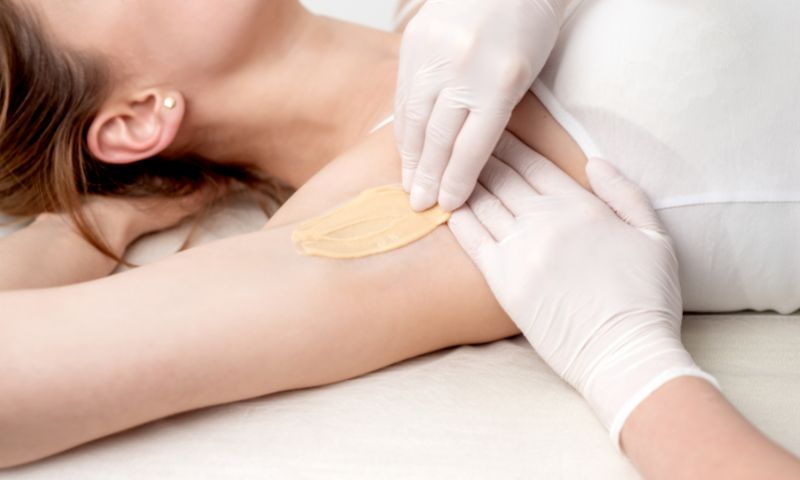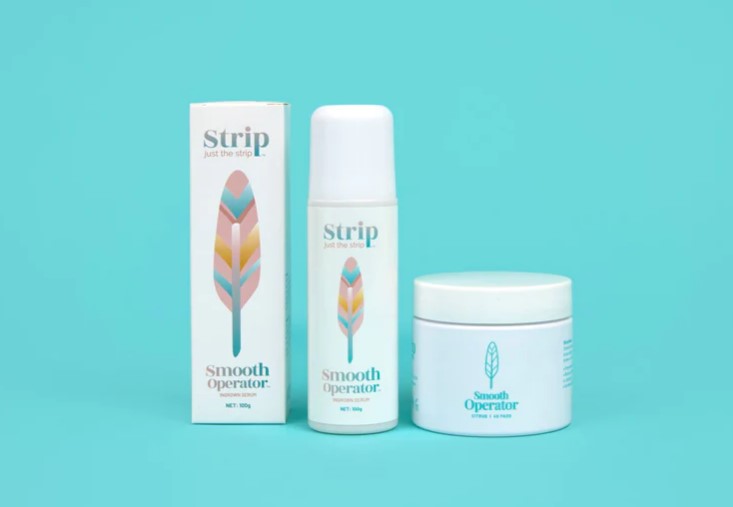
10 Myths and Facts about Waxing
Waxing is an incredibly popular hair removal method. But there are quite a few lingering misperceptions about what waxing is or isn’t. You have questions – we have answers.
Let’s take a look.
1. Hair has to be a certain length to be waxed – TRUE
If your hair is too short, it is going to be more difficult for the wax to grip the hair well to remove it. On the contrary, if the hair is too long, it can hurt more. That’s because longer, thicker hair also does not grip properly to the strip. There is also a higher chance of missing a few hairs here and there when the hair is longer.
For hassle-free waxing, your hair should ideally be ¼” to ½” long so the wax (and the waxing strip) can stick to them properly and pull them out from the root. So, don’t shave before heading for your waxing appointment.
2. Your skin is sensitive after waxing – TRUE
Yes, this is true. Your skin is sensitive after waxing.
Waxing pulls the hair out from its roots, thereby opening the pores of the skin and making sensitive after being waxed. But don’t worry. It just needs some rest. Do not expose the waxed areas to excessive heat, sunlight, tanning sprays, perfumes, fancy lotions, etc., for at least 24 to 48 hours. To speed up the recovery or to get rid of irritation/rashes, you may apply a cold compress.
3. Exfoliating is important – TRUE
Removing dead skin cells is important before and after waxing, even though waxing itself exfoliates the skin (partially).
Exfoliation before waxing removes dirt, dead skin cells, etc. It loosens up the pores and helps wax stick to the hair properly. This makes it easier to pull the hair out from the roots. It also reduces pain and inflammation. It’ll reduce the chance of hair breakage and missing a few hairs here and there.
Exfoliating the skin 24 hours or more after waxing (not before that because your skin is sensitive) will help prevent ingrown hair and clogging of pores.
4. Waxing makes your hair grow back thicker – FALSE
When you wax your hair, you pull it out from the root. It could take weeks for the roots i.e. the hair bulbs, to recover and grow new hair. This means the hair will regrow slower than it does when you shave, which cuts the hair from above the skin. With time, and regular waxing, you can end up with finer, thinner hair that is easier to remove.
Shaving, on the other hand, doesn’t damage the roots. So, the regrown hair will be the same as the one you cut but not thicker or coarser.
5. Waxing Hurts – TRUE and FALSE
Waxing can be somewhat painful, because we are pulling the hair from the roots. However the pain should be tolerable. How painful you consider waxing depend on your pain tolerance. Slight discomfort is normal. In addition, some areas, like what is waxed with a Brazilian wax can feel more uncomfortable, because the areas are more sensitive.
The great news! When you get waxed at a salon you get what is called speed waxing – that is you are in and out in minutes (depending on the areas being waxed). Speed waxing is done by the professional at the salon, it’s fast and efficient, minimizing the discomfort.
6. Waxing lasts longer than shaving – TRUE
When you shave, you cut off the hair that has grown above the skin. The roots remain intact. So, the hair will grow back pretty fast, even within a few days you can start seeing new growth.
Waxing, on the other hand, removes the hair from its roots. To grow back, the root has to heal first. This usually takes 3 to 4 weeks.
7. You cannot get ingrown hairs with waxing – FALSE
The chances of getting ingrown hair are less with waxing than with shaving, but it depends on how you prepare your skin before waxing and how you take care of it afterward.
You get ingrown hair when the skin’s surface gets blocked and doesn’t let the hair come out of it. In most cases, such hairs complete their cycle and fallout, but sometimes, they may form a pimple-like thing that might require treatment.
To minimize ingrown hairs, exfoliate your skin before and after waxing as well as regularly. Keep your skin moisturized. Get waxed at a salon and use an ingrown hair serum.
8. Waxing causes wrinkles and sagging skin – FALSE
This is probably the scariest waxing myth you may have heard.
Waxing may cause irritation and sometimes minor rashes but not wrinkles. It is much safer for your skin than shaving and other hair removal methods. It exfoliates the skin, removes tanning, and helps the skin stay clean and glowing.
You must note that waxing may make your skin sag due to repeated pulling when not done with the utmost care by a trained professional. The skin must be held tightly during the pulling process and must be pressed later. Trained professionals know how to do that, which is why it’s a good idea to get waxed at a salon by a professional.
9. Don’t shave between waxing appointments – TRUE
Shaving sharply cuts your hair at a straight angle. This changes the texture of the hair. Plus, the chances of getting ingrown hair are high in shaving.
Bottom line: Shaving between waxing appointments can make it more challenging to get a proper wax next time.
10. You can swim after waxing – FALSE
Hopping into a swimming pool or dipping into the ocean is not a good idea for the first 24 hours after waxing. Your waxed skin is sensitive, and the pores are open, which can cause bacteria to start a party on your body! No, thank you!
If you are heading for a vacation or planning to go to the pool, make your waxing appointment a few days before the pool plunge.
Recommended Aftercare Products
Waxing aftercare includes taking steps to help prevent ingrown hairs and irritation. We use Strip products at our salons. You can now get these products too!
Purchase your products online – before or after your visit – and get 10% OFF – Use code WAXLASH10 at checkout!
Strip’s Smooth Operator treats and prevents razor burns and bumps resulting from waxing, tweezing, shaving, laser hair removal, and electrolysis. Used after shaving or waxing, Smooth Operator helps to nourish and smooth your skin. A convenient roll-on application ensures even coverage for optimal results.

